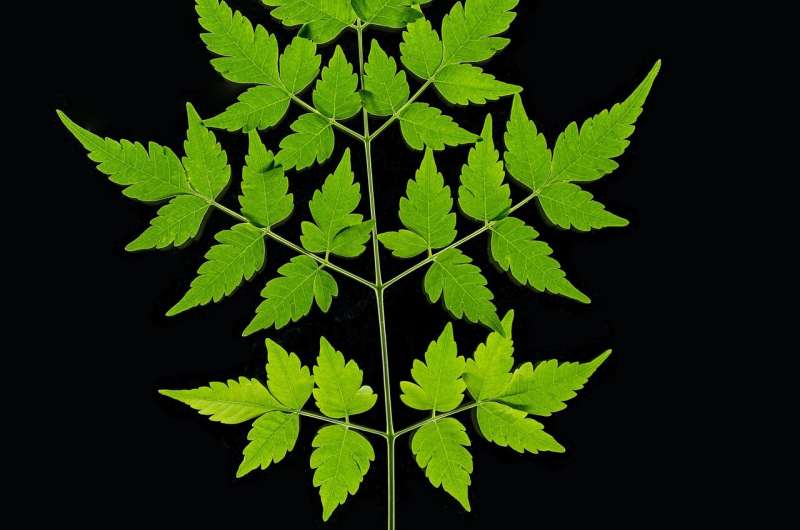Melia azedarach (Chinaberry) was used in the study. Credit: Andrew Davis
Limonoids are a class of plant natural products whose complex chemistry has been intensively investigated for over 50 years.
The best known limonoid, azadirachtin, is famous for being bee-friendly yet having a strong anti-insect effect; others are well known for contributing bitterness to citrus fruits, while further examples such as nimbolide, are being investigated for potential pharmaceutical anti-cancer uses.
Yet, despite this wealth of research, how plants even begin to make these useful chemicals has remained a mystery—until now.
Researchers from the John Innes Centre and Stanford University have uncovered new genes that encode this high-value chemistry.
The team used genome mining resources to identify three new enzymes which can make the limonoid precursor melianol and therefore represent the initial steps of limonoid biosynthesis.
Due to the complex chemical structure of limonoids, it is difficult to chemically synthesise these natural products. As a result, their use is currently limited to what can be extracted from plant materials.
Understanding how melianol is made opens the door to metabolic engineering of limonoids in which the newly discovered genes can be expressed in plants or microbial hosts. It is a step towards large-scale production of limonoid pharmaceuticals and possible development of insect-resistant crops.
"If this engineering could be achieved, then crops could be developed with an inherent resistance to insects, which could reduce reliance on chemical application for crop protection. Additionally, larger amounts of useful limonoids could be made available to pharmaceutical industries, which could accelerate research into potential medicinal uses of limonoids," explains lead author Hannah Hodgson.
"Our next step is to find and characterise the remaining enzymes required to convert melianol to limonoids. This will be a challenge, but we believe that identifying the enzymes required to produce melianol represents a strong starting point," she adds.
Limonoids are made by plants belonging to the Mahogany (Meliaceae) and Citrus (Rutaceae) families.
Here the John Innes Centre team characterised enzymes from Melia azedarach, a tropical tree from the Meliaceae family. Collaborators at Stanford University found and tested similar genes from Citrus sinensis (Sweet Orange) which is in a different family of plants (Rutaceae). The three genes found by the Stanford team also produce melianol, which suggests the start of limonoid biosynthesis is shared between these two distinct families of plants.
More information: Hannah Hodgson et al. Identification of key enzymes responsible for protolimonoid biosynthesis in plants: Opening the door to azadirachtin production, Proceedings of the National Academy of Sciences (2019). DOI: 10.1073/pnas.1906083116
Journal information: Proceedings of the National Academy of Sciences
Provided by John Innes Centre























